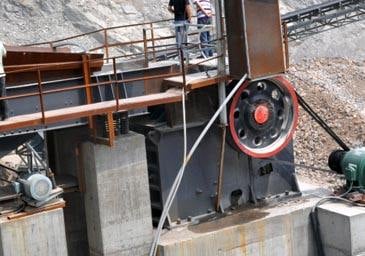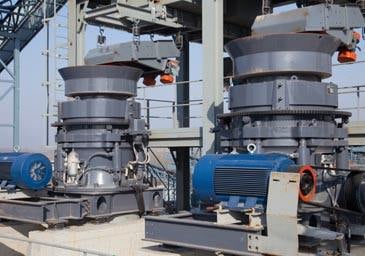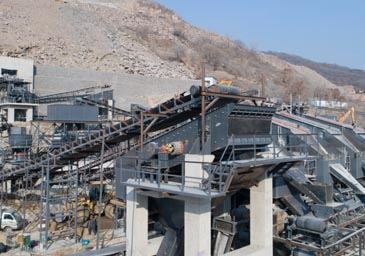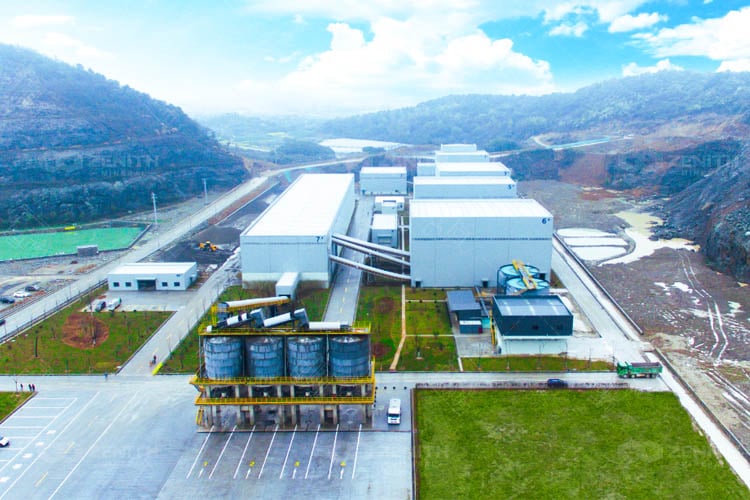Aggregate is the basic material of engineering construction, which is widely used in electricity, construction, roads, highways and other construction fields. Its commonly used raw materials are cobblestone, granite, diabase, basalt, limestone, etc. For different raw materials, the choices of crushing equipment are also different. The quality of aggregate directly affects the strength of coagulation, so the technological design and equipment configuration of aggregate crushing plant are particularly important.



In the aggregate plant, we should choose suitable crushing equipment according to different raw materials.
First of all, when we classify the raw materials, we can roughly divide the raw materials into hard stone and soft stone.
Hard stone is mainly represented by cobblestone, granite and basalt, and its hardness is basically above 150Mpa. When processing such kind of raw materials, the selection of crushing equipment usually considers jaw crusher and cone crusher, and then uses impact crusher (shaping machine) for shaping according to the requirements of the finished product, so as to eliminate the needle-like particles and internal cracks of the products in the crushing project. Finally, adopt vibrating screen for sorting, and the crushed raw materials are sorted into finished sand and gravel aggregates of various specifications.
When processing soft stone, such as limestone, sandstone and other stones with hardness below 150Mpa, the choice of crushing equipment can consider jaw crusher, impact crusher, heavy hammer crusher. Similarly, according to the requirements of the finished product, it can be combined with an impact crusher (shaping machine) for shaping, which can effectively improve the output capacity of machine-made sand while eliminating the needle-like particles and internal cracks in the products generated during the crushing process of the stone.
One thing to note here is that limestone varies widely in hardness depending on its silicon content. If it is limestone with high silicon content, a cone crusher can be adopted for crushing.
There are many ways to select sand and gravel aggregate processing equipment and process design. How to choose and match the equipment needs to be comprehensively considered according to the hardness, looseness, mud content, finished product requirements and other factors of the raw materials.
In the design of the aggregate production line, not only ore raw materials, but also other factors must be considered comprehensively, such as the requirements of finished products, site environment, environmental protection requirements, construction costs and post-operation costs.
Here are 6 factors to take into consideration when building a new aggregate plant.
When designing the process flow, the layout of the entire stockyard should be considered comprehensively and it must be combined with the actual situation of the site, such as raw material conditions, output capacity, finished product requirements, site size, electricity, entry/exit road, drop between platforms on the site, drainage, wind direction, and later maintenance and other factors.
The equipment layout should be as compact as possible to facilitate later operation and management. The design of the crushing process should consider the principle of multi-stage crushing. Generally, there are secondary crushing, tertiary crushing, and quaternary crushing and so on. The specific method should be determined according to the requirements of raw materials, output capacity and finished products.
The selection of crushing equipment should be suitable for different raw materials. It should be noted here that when selecting equipment, it is necessary to select equipment with matching production capacity of the previous and subsequent equipment according to the design output requirements. At the same time, it is also necessary to consider the feeding requirements of the equipment, and the crushed materials of the previous equipment must meet the feeding requirements of the subsequent equipment to prevent the occurrence of material blockage.
The selection of screening equipment. When choosing a vibrating screen, it should be considered as large as possible when conditions permit. Sufficient and effective screening can not only sort out qualified finished products, but also increase the output capacity.
The choice of supporting environmental protection facilities. As the country pays more and more attention to environmental protection, the previous extensive and high-polluting production mode can no longer meet the needs of modern sand and gravel quarries. Environmental protection should focus on three aspects: noise, dust, sewage. Its emission standards should comply with the current national environmental protection standards.
The design of the finished material yard. Finished product yards can be designed as manual loading or automatic weighing and loading systems. The automatic weighing and loading system can not only greatly improve the loading efficiency, but also effectively reduce the labor cost.
As the scale of the sand and gravel quarry is getting bigger and bigger, when designing the control system and monitoring system of the quarry, a centralized control, intelligent management and monitoring system should be designed to facilitate the later operation and management of the sand and gravel quarry.

the front of the production line adopts jaw crusher + desilting screening + pre-screening + cone crusher + vertical shaft impact crusher for shaping+ finished product screening, the back of the production line adopts tower-like sand making process.

The good development prospects and huge market space of the industry have attracted capital from all walks of life, and the modernization and intelligent development of the sand and gravel industry has become a trend.

With the construction of high-speed railways, highways, nuclear power plants, and super high-rise buildings, ordinary sand and gravel aggregates can no longer meet the raw material needs of high-performance concrete.
Fill your requirements here, and we'll send the custmized solution and quotation to you by the reserved contact information.